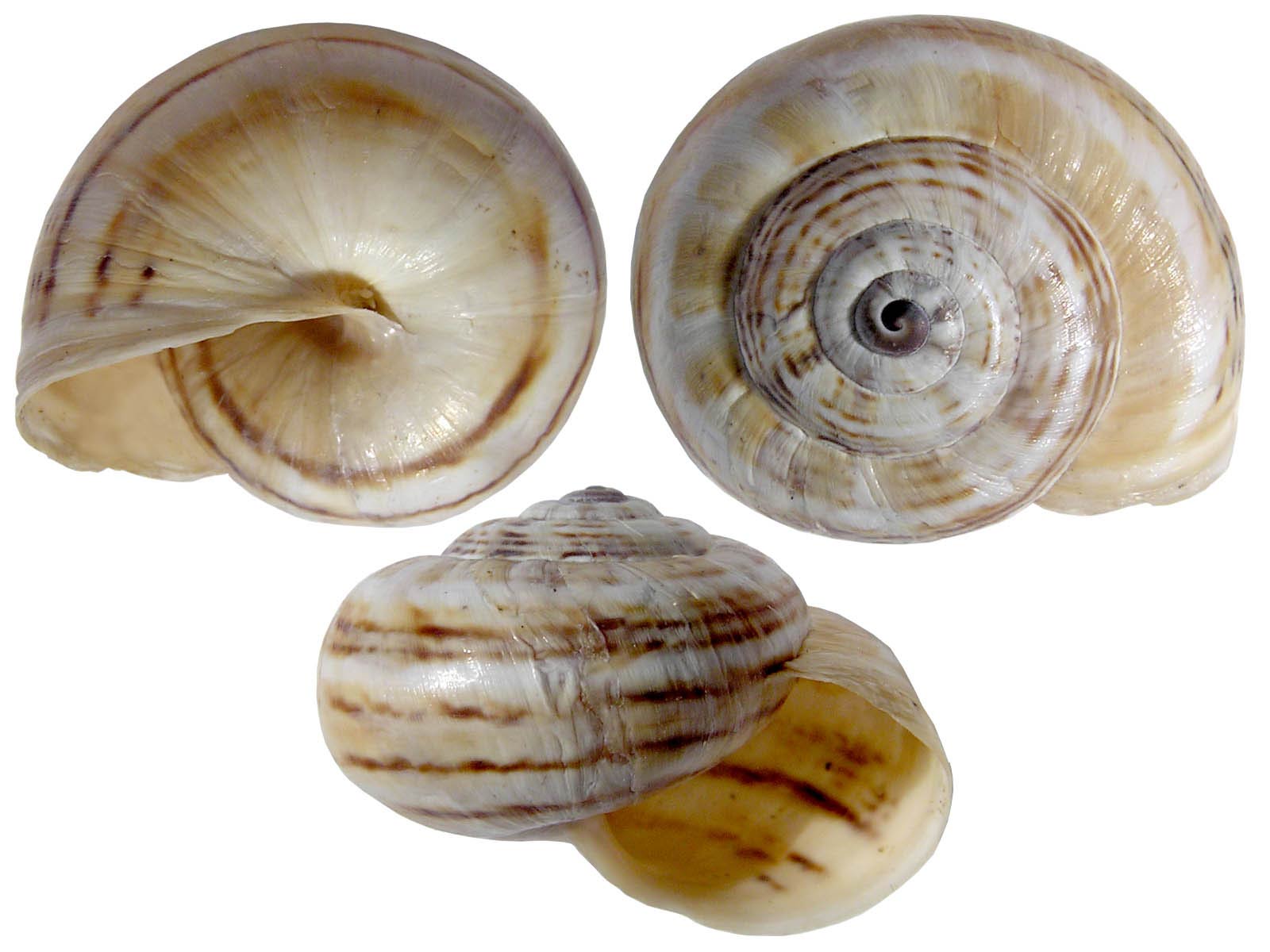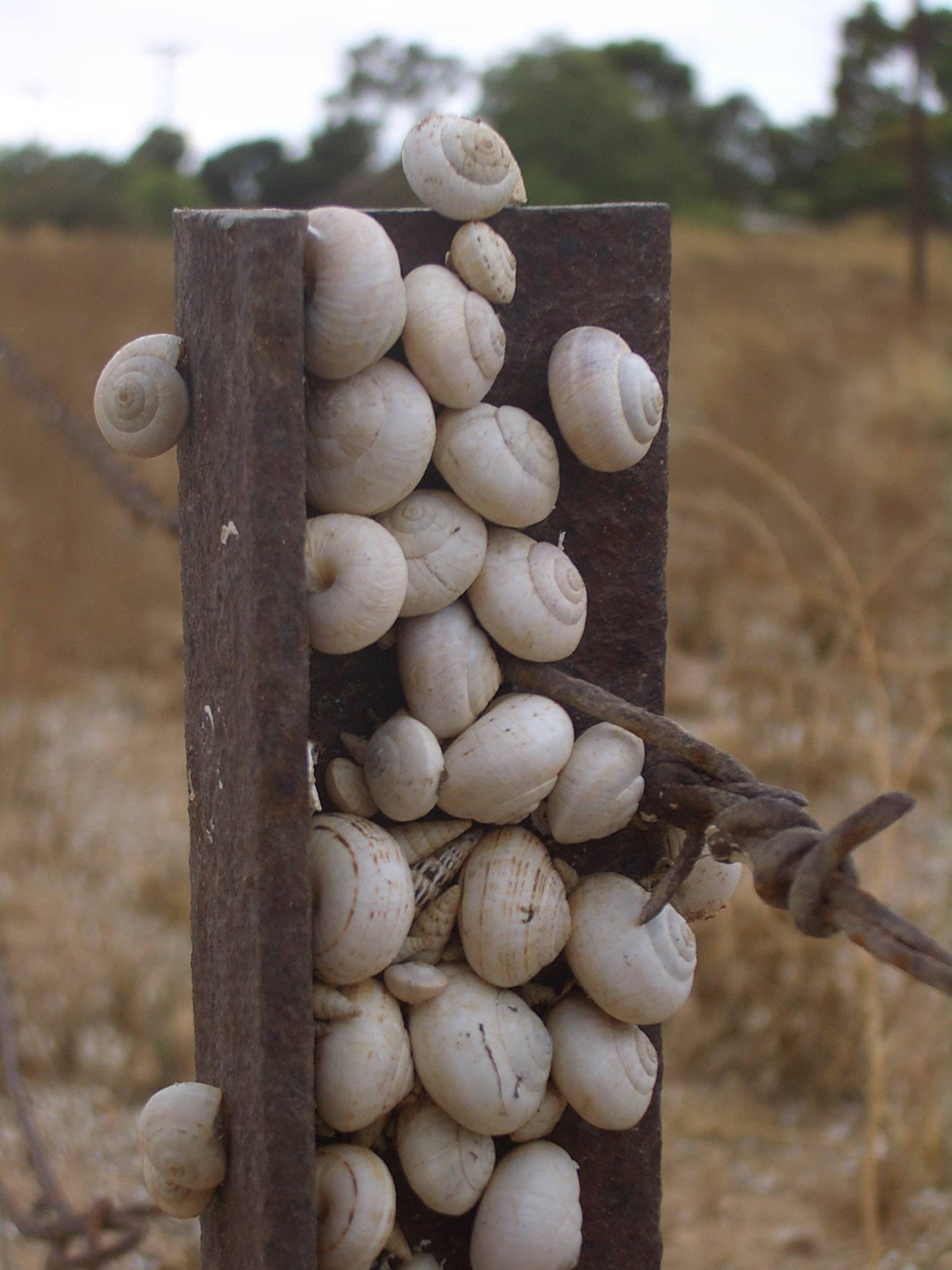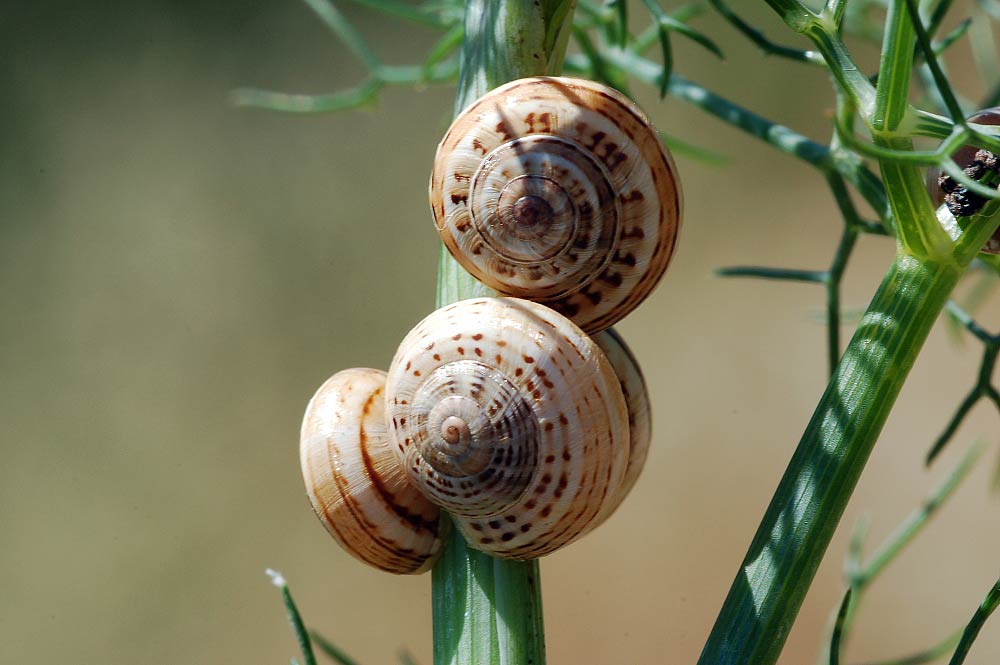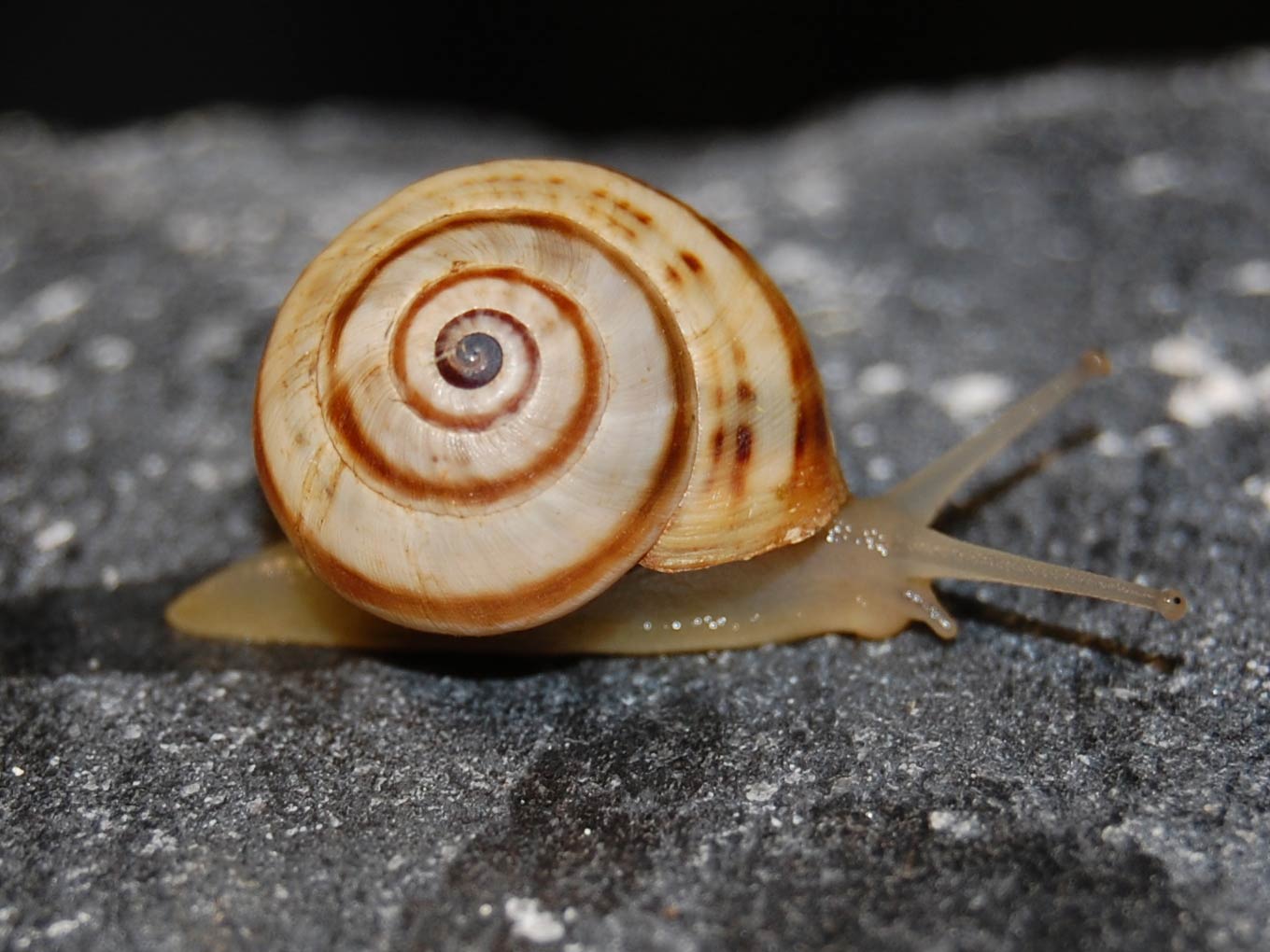Theba pisana
|
Theba pisana. (Photo: © J. Novak, www.biolib.cz) |
|
Theba pisana. (Photo: © Dr. Roy Anderson, MolluscIreland) |
|
Theba pisana. (Photo: © Vmenko, Wikipedia) |
|
Theba pisana: juveniles. (Photo: © F. Geller-Grimm, Wikipedia) |
|
Theba pisana: juvenile. (Photo: © Grasso, Wikipedia) |
|
Theba pisana: juvenile. (Photo: © Dr. Roy Anderson, MolluscIreland) |
Family
Helicidae
Species
Theba pisana (Muller, 1774)
Common name
White garden snail, Mediterranean sandsnail, Sandhill snail, White snail
Description
The tough, opaqueOpaque:
Not having the ability to see through an object. (Not transparent or translucent)
shell of this species is slightly flattened (low spireSpire:
All the coils (whorls) of a shell above the body whorl.
). The heightHeight:
The height of the shell is a measure of the distance between the apex and the most basal part of the shell OR the measurement taken from the apex of the shell to the base, when measured parallel to the axis of the shell.
of the shellShell:
A hard, inflexible, calcareous or chitinous structure that vary in size and may either completely encasing the animal, covering some part of it or be internal.
is 13 mm and widthWidth:
The width of the shell is the maximum distance across the shell (including the aperture).
18 mm with 4 1/2 whorlsWhorls:
Pleural of whorl. A whorl is a complete spiral turn/growth of the shell of a mollusc. The whorls are counted from the apex outwards.
. However, some specimens may be smaller. The ivory yellow shellShell:
A hard, inflexible, calcareous or chitinous structure that vary in size and may either completely encasing the animal, covering some part of it or be internal.
may be uniform or it may possess unequal brown stripes. These stripes or lines may be interrupted forming dots or dashes. The dull surface has fine growth lines. However, the embryonic 1 1/2 whorlsWhorls:
Pleural of whorl. A whorl is a complete spiral turn/growth of the shell of a mollusc. The whorls are counted from the apex outwards.
are smooth.
Native range
Mediterranean region and Western Europe
Distribution
North America:
- U.S.: California
Atlantic Islands: Bermuda, Canary Islands
Australia
Europe: Western France, Southwestern England and Wales, Ireland
Asia: Iran
Africa: South Africa, Somaliland
Other: Mediterranean region
Ecology
Typically this snail is found in coastal, sandy areas. Theba pisana has the potential to increase in number rapidly. This species has been deemed a serious pest and and may be a nuisance because of its ability to aggregate in large numbers. It may occur in numbers of up to 3000 in one tree. This snail possesses the ability to defoliate large trees, including citrus and ornamentals. It also consumes garden crops, seedlings and cereal grains (e.g., wheat, barley, oil seeds, seed carrot and legumes). In grain producing areas this species will cause direct and indirect losses. Direct losses include clogging machinery and directly consuming the crop. Indirect losses include contaminating the grain and allowing for the infestation of the grain by secondary fungal pathogens, due to the added moisture they provide.
Theba pisana generally lays its eggs several inches below the soil surface with an average of 70 eggs per clutch. It takes approximately 20 days for the eggs to incubate; however, it may take longer in dry weather. This snail typically does not seek cool, dark places to aestivate. They preferentially attach to plants, fences, under stones or other vertical, physical structures. Longevity: 2 years.
Synonyms
- Helix pisana Muller, 1774, Verm. Hist., 2: 60; Taylor, 1911, Monogr. L. & Freshw. Moll. Brit. Is., 3:360, pl. 30, 31; Orcutt, 1919, Nautilus, 33:63.
References
Anderson 2005Anderson 2005:
Anderson, R. 2005. An annotated list of the non-marine Mollusca of Britain and Ireland. Journal of Conchology 38: 607-637.; Barker 2002Barker 2002:
Barker, G.M. (Ed.) 2002. Molluscs as crop pests. CABI Publishing, Wallingford, UK. pp. 1-468.; Cowie et al. 2009; Hitchcox and Zimmerman 2004Hitchcox and Zimmerman 2004:
Hitchcox, M.E. and F.J. Zimmerman. 2004. Threats to agriculture from exotic terrestrial Stylommatophora and early detection strategies. Abstracts-American Malacological Society, Sanibel. p. 42.; Pilsbry 1939Pilsbry 1939:
Pilsbry, H. A. 1939. Land Mollusca of North America north of Mexico vol. I part 1. Academy of Natural Sciences, Philadelphia. pp. 1-574.; Mead 1971Mead 1971:
Mead, A.R. 1971. Helicid land mollusks introduced into North America. The Biologist 53: 104-111.; Rumi and Sanchez 2010; Yildirim et al. 2004Yildirim et al. 2004:
Yildirim, M.Z., U. Kebapçl and B.A. Gümüs. 2004. Edible snails (Terrestrial) of Turkey. Turkish Journal of Zoology 28: 329-335.







